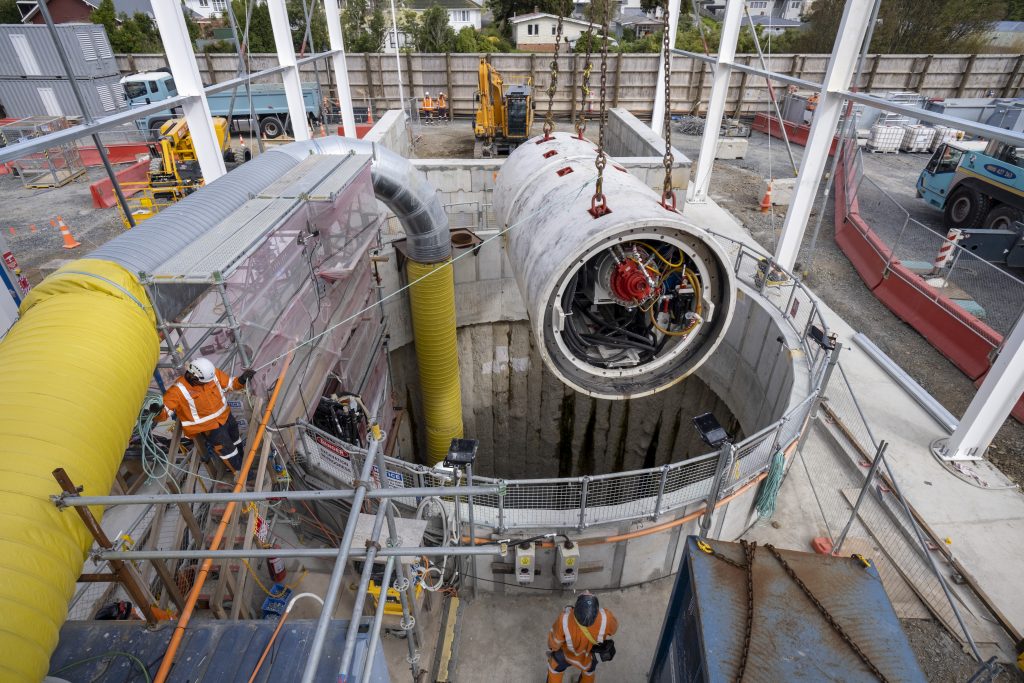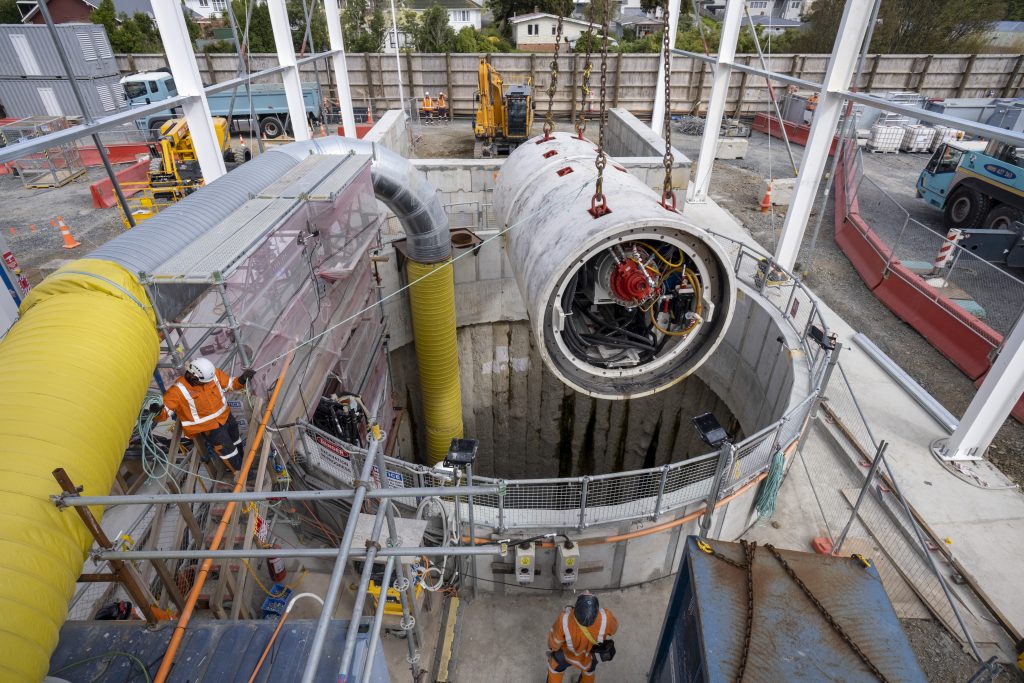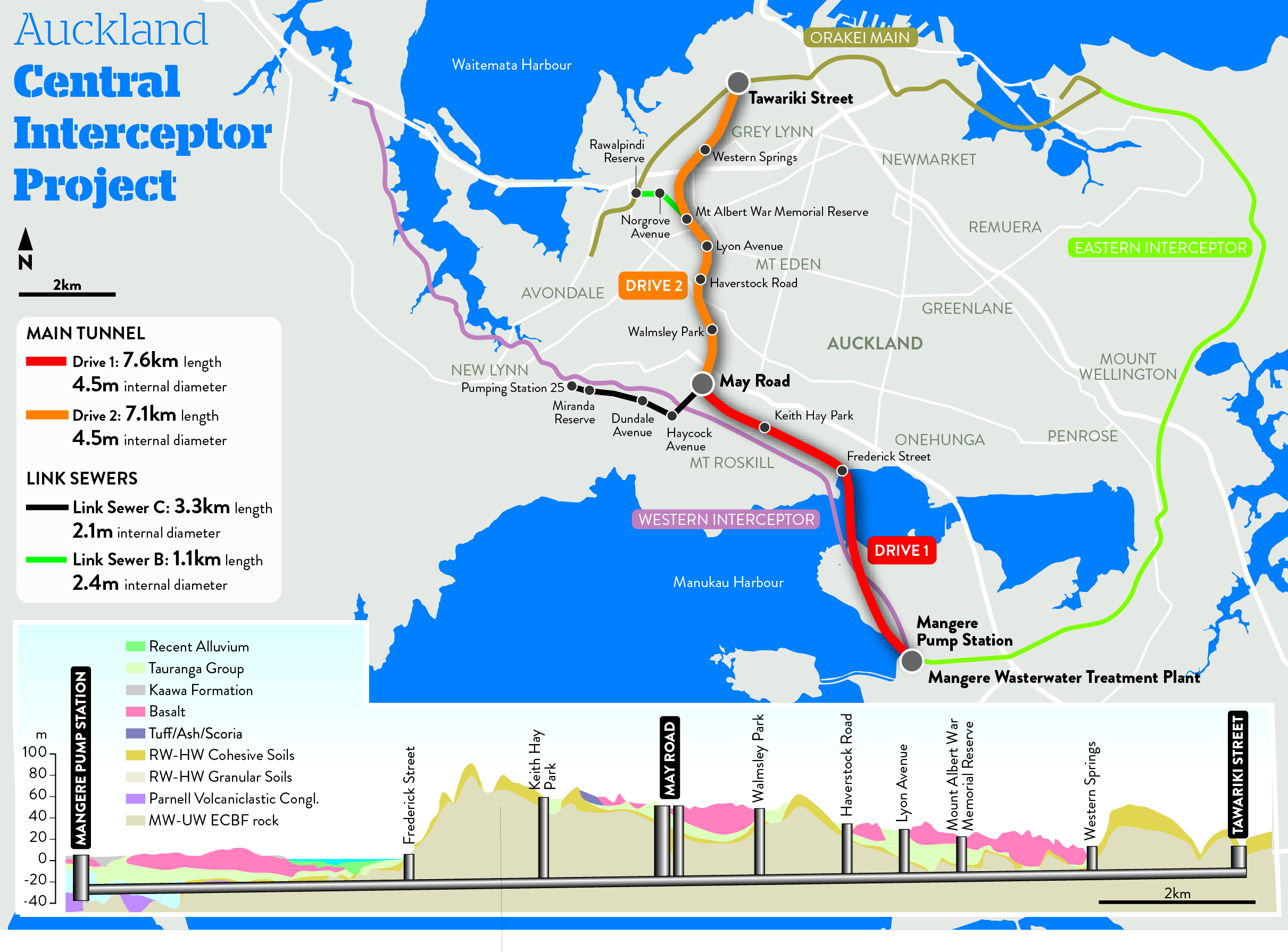New Zealand’s largest ever wastewater infrastructure project is underway. It will reduce combined sewer overflows and water pollution.
In September, a tunnel boring machine (TBM) for the 14.7km Central Interceptor tunnel in Auckland, New Zealand, broke through into a 69m deep shaft at May Road. It had completed the first of the tunnel’s two drives.
The tunnel is part of local water and wastewater provider Watercare’s NZ$1.2bn (£590M) Central Interceptor project, the largest wastewater infrastructure project in New Zealand’s history.
The project’s aim is to reduce combined sewer overflows and consequent pollution resulting from the existing network’s inability to cope with heavy rain and wastewater volumes generated by Auckland’s growing population – which has reached 1.7M people.
Watercare expects the Central Interceptor to reduce the annual overflow volume in the city’s Waitemata and Manukau harbours by as much as 80%.
Central Auckland’s original sewer network was built in the early 1900s and then extended in the 1950s and 1960s. In this part of the city there are three interceptors – the 18.2km long Eastern Interceptor, the 13.6km long Orakei Main Sewer and the 19.5km Western Interceptor – which are connected to form an almost circular system.
These interceptors enable wastewater to flow clockwise until it reaches the Māngere Wastewater Treatment Plant (WWTP) in the southern suburbs. Here, most of the city’s wastewater is treated at an average volume of 300,000m3 per day.
Wastewater and stormwater flow into a combined network of pipes which are linked to the interceptors. This combined sewer system is often overwhelmed during wet weather, resulting in overflows.
The need for new infrastructure to tackle the issue was identified in the 1990s. Studies carried out between 2005 and 2008 recommended the construction of a central interceptor providing a direct connection between the Orakei Main interceptor – built in 1911 – in the north part of Central Auckland and the Māngere WWTP.



